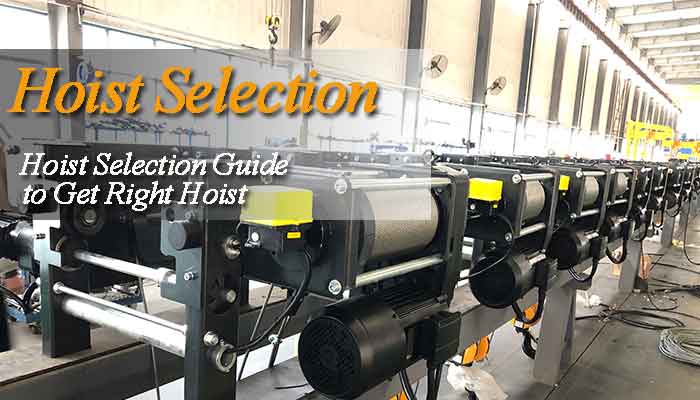
How to Select a Right Hoist for Your Specific Application?
Buying or specifying hoists to move big things near to equipment and/or personnel is a decision that should be carefully considered. We'll go over some key points to consider in your decision-making process in this article.
A comprehensive guide to choose the best hoist for your needs is presented for your reference.
Determining Required Capacity
The rated capacity of a manual hand chain hoist should be at least as high as the weight of the largest load to be hoisted and no higher than the rated capacity of the pad eye, monorail system, or other overhead structure from which the hoist will be suspended when purchasing one.
When estimating the capacity needed for an electric or pneumatic hoist, we must not only consider the weight of the highest load to be hoisted, but also determine the Mean Effective Load (MEL) and apply the MEL factor of.65, in addition to the variables stated above for manual hoists.
Selecting a Suspension Type
Chain hoists can be installed on a trolley using a top hook or mounting lug, or they can be suspended in a fixed location. Trolleys come in two types: rigid and articulating. Plain (push type), hand geared, or motor-driven trolley traverse are all options. Examples of common chain hoist suspension types can be found below.

Hook mounted chain fall electric hoist
Hook mounted, lug mounted, eye mounted chain fall electric hoists with no trolley up to 32 ton
The horizontal handling of the chain fall electric hoists are in conjunction with the hoist trolleys. The chain fall electric hoists with hooks or lugs can be used as fixed hoists mounted on supporting structures, and the chain fall electric hoists with trolleys can be used as travelling hoists running on suitable overhead girder beams or rails.

Electric trolley chain hoist
Motorized trolley & electric trolley electric chain hoists up to 35 ton
Powered trolleys or motorized hoist trolley may add a little cost but offering a high efficient chain fall electric hoist solution which will be a cost-effective solution for a high volume material handling. Electric chain blocks with motorized trolley may give you a exceptional return.

Maual trolley electric chain hoist
Manual trolley electric chain hoists up to 30 ton
The manual trolley chain fall electric hoist is an economical but effective trolley hoists with the combination of manual trolley and electric chain hoists which will be a cost-effective solution for applications where light duty material handling with frequent vertical lifting but less horizontal movement is required.

Low headroom chain electric hoist up to 35 ton
Low headroom chain fall electric hoists are specially designed for workshop with limited working space. With customized designs, the lifting height of low headroom chain fall electric hoists can up to 130 meters, which will be a cost-effective chain fall electric hoist solution for your applications.
Choosing Lift, Reach & Headroom
These three characteristics should be grouped together because they are closely related. Simply described, the length of lift is the distance between the fully lowered and fully raised positions that the load hook can traverse.
The distance between the hoist suspension point (pad eye or trolley beam running surface) and the hook saddle in its lowest position is measured in reach.
The space between the hoist suspension point and the fully raised hook saddle is known as headroom. The distance between the saddle of the top hook and the saddle of the fully raised lower hook is the headroom measurement for a hoist with top-hook suspension.
Understanding the Operation Type Needed for Your Application
The power source that drives the hoisting motion is referred to as the operation type. Manual, electric, and pneumatic (air) power are all options for operation. Initial cost, utility availability, job cycle, lifting speed need, operational environment, and other factors are used to determine which of these types is ideal for a given application.
- Manual hand chain hoists have the lowest purchasing price, making them excellent for applications that need temporary or rarely use, limited capacity, a short lift height, or where power sources are unavailable.
- Electric and pneumatic hoists are more ergonomic, have faster lifting speeds, and are more suited for heavy-duty cycles, high capacities, and long lifts than manual hoists.
- Air hoists require a large amount of compressed air to operate and are frequently employed in applications with lengthy lifts or high duty cycles, as well as in locations where electric power is impractical or unavailable. Air motors are often self-cooling, allowing them to run for practically indefinite periods of time. Air hoists are also employed in some hazardous places where combustible gases or dust may be present because there is no risk of electrical arcing. One disadvantage is that air hoists are much noisier to operate than electric or manual hoists.
- Electric hoists can be less expensive to buy than pneumatic hoists. They do not necessitate the purchase and installation of an air compressor, and they are often quieter to operate than air hoists. For most general lifting purposes, electric hoists are preferred over pneumatic hoists when appropriate electric power is available. Special motors and controls can be added to electric hoists to make them appropriate for usage in designated hazardous locations.
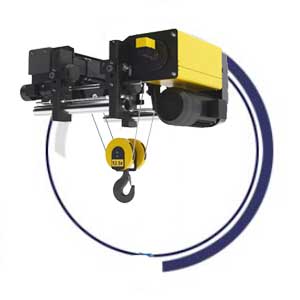
European Style Electric Hoist
The jib hoists are applicable for various types of single girder overhead travelling crane, single beam crane, H beam crane, I beam crane, monorail crane, and other types of single girder cranes, etc.
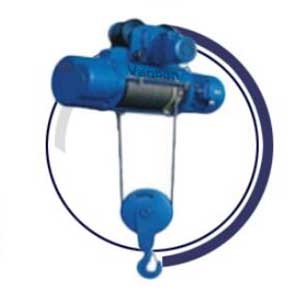
Chinese Style Electric Wire Rope Hoist
The Chinese type jib hoists are applicable for various types of single girder overhead travelling crane, single beam crane, H beam crane, I beam crane, monorail crane, and other types of single girder cranes, etc.
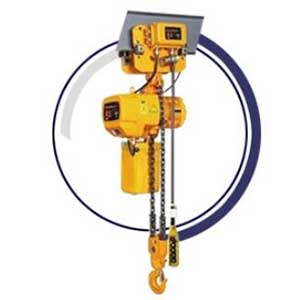
Electric Trolley Electric Chain Hoist
Types of jib crane hoist designes are available for your single girder overhead travelling crane. Contact us to get your overhead crane design and good overhead crane price.
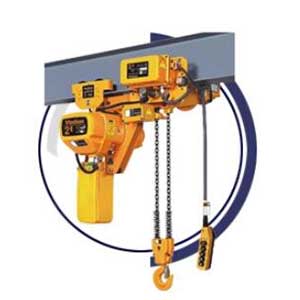
Low Headroom Electric Chain Hoist
Types of jib crane hoist designes are available for your single girder overhead travelling crane. Contact us to get your overhead crane design and good overhead crane price.
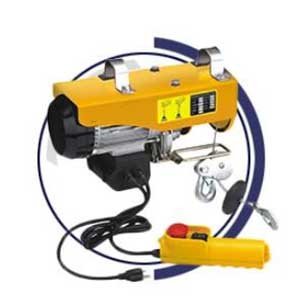
Mini small electric chain hoist with single phase
Mini electric wire ropes hoists - fixed hoist design & electric trolley type- 0.2 ton- 1 ton mini rope lift, single phase mini electric hoists, cheap small hoist for sale.
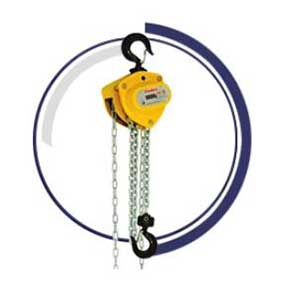
Manual and hand chain hoist & chain block
Manual chain block & manual chain hoist for sale. Light,economical & handy manual hoists & hand hoists of 250kg, 1 ton, 1.5 ton , 2 ton , 3 ton , 4 ton , 5 ton , 6 ton,etc.
Determining Required Duty Class
The Hoist Manufacturer's Institute (HMI) and the American Society of Engineers (ASME) have created and published standards for hoists, including hoist duty ratings. The number of lifts performed per hour over a given work period, the average and maximum load that is lifted, the frequency at which the maximum load is lifted, the average distance the load is raised and lowered, and the maximum number of stops and starts per hour are all factors that go into these classifications. The table below serves as a guide to assist you appreciate the importance of duty class ratings supplied by hoist manufacturers for their products.
Picking Your Lifting Speed
Lifting speeds on hoists vary greatly and should be carefully evaluated before making a decision. In general, quicker lifting rates are favored for lengthy lifts or shorter lift applications that require a large number of lifting/lowering cycles to be accomplished in a short amount of time.
The torque demand is determined by the weight of the load to be lifted, as well as the required lifting speed and hoist gear ratio, which defines the motor horsepower required to deliver that torque. Higher horsepower motors can increase a hoist's size, weight, and power consumption, as well as its price. The most frequent lifting speeds are 8 to 32 feet per minute.
Determining a Power Supply
Some electric hoists are intended to run on single-phase power at 120 or 230 volts. These hoists have a capacity of 14 to 2 tons and are commonly found in home workshops, garages, and light manufacturing operations. In North America, most industrial facilities are wired for 208, 230, 460, or 575v, 3-phase, 60 Hz power. 240v and 480v are the most prevalent voltages, while 575v is also widely used in Canada. Before you go out and buy or select an electric hoist, be sure you know how much power you have.
Selecting a Control Type for Your Electric Hoist
Most electric hoist controllers do not run on the full line voltage that is supplied to the hoist motors to decrease the risk of serious harm from electric shock. Instead, transformers are used to reduce the control voltage to 120v or 24v. Hoists can be outfitted with a range of control options. Single-speed and two-speed contactor controls are the most prevalent. A unique motor with two-speed windings is also required for two-speed contactor control.
The variable speed drive (VFD), often known as an adjustable frequency drive, is another potential control mechanism (AFD). By adjusting the motor input frequency and voltage, this solid-state control system modulates AC motor speed and torque. A variable speed hoist that runs at 20 FPM on 60 Hz power, for example, would run at around 10 FPM if the frequency was dropped to 30 Hz using a VFD control.
Closed-loop variable frequency drive systems, also known as flux vector drives, take VFD control to the next level by sending feedback to the control module via an encoder on rotating components such as the hoist motor shaft or gearbox output shaft. This form of closed-loop control system may give exceptionally accurate speed control and load spotting, and it can be utilized with a programmed logic control (PLC) to automate lifting and lowering functions depending on preset parameters. Dynamic braking, which gives softer stops and can considerably increase the life of the motor brake, is another key benefit of a flux vector hoist drive.
Choosing a Control Pendant
A hard-wired control pendant is suspended from the hoist, trolley, or crane in the majority of electric chain hoists (where applicable). Hard-wired pendant stations can be wall-mounted in some circumstances. Wireless radio remote control systems are also available, allowing the operator to control hoist functions from anywhere in the hoist's broad vicinity. In comparison to a hard-wired pendant, radio control pendants can be smaller, lighter, and more ergonomic.
Understanding Dimensional Constraints
Before choosing a hoist, keep in mind any dimensions restrictions that may exist in the location where the hoist will be used. Headroom clearance, side clearance along the length of the monorail or crane beam, and end approach clearance are all important considerations.
The distance between the midline of the lifting hook and the end of a monorail beam, bridge beam, or runway on which the hoist is operating is referred to as "end approach" (see dimension "A" to the right).
This is critical because it affects the hoist's ability to center itself over the load to minimize side tugging. Find out more about the risks of side pulling.
Determining Needs for Special Environments
"Normal operating circumstances" are integrated into standard chain hoists. Temperature extremes, exposed outdoor areas, salt-laden marine settings, corrosive atmospheres, classified hazardous places, clean rooms, and wash-down facilities, to name a few, may necessitate hoists with particular modifications or optional features suited for such situations.
We hope that the information in this post shed some light on some of the factors to consider before purchasing or ordering a hoist. The first step toward safe, efficient, and ergonomic material transportation is to choose the correct hoist for the job. Please contact our application experts for more information on your overhead lifting needs.



